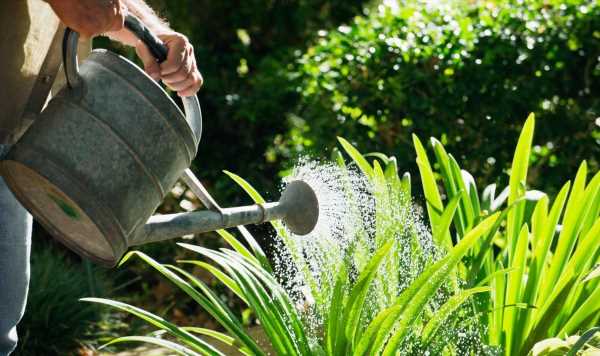Gardening: Francis Tophill advises on watering plants without a hose
According to the plant experts at Phostrogen, every plant is 80 percent water, and the only means of drawing up water is through the roots, meaning proper watering is essential.
The experts explained: “An error often made by gardeners is watering too frequently, as this means the plant isn’t encouraged to develop its own root system and search for water at a deep level, becoming dependent on the surface water provided instead.”
How often a plant or shrub needs watering depends on a variety of factors including weather and soil type.
The type of soil is an important factor in how often gardeners should water their plants.
The experts said: “Depending on the texture of your soil and whether it is compacted or not, it will have a greater or lesser ability to hold water, which seeps down to the roots.

“There are four main types of soil to consider, so begin by identifying which type of soil you have. If your soil is sandy, water is often and a little at a time, as it can’t hold a lot of water.
“Generally speaking, if it is more clay-like, you can freely water with large quantities of water, but less often.”
The weather also plays a big factor in how much plants need watering, but it can be tricky to keep an eye on exactly how much rain has fallen.
To track how much rain has fallen, Britons can use a rain gauge which can easily be installed into a clear area of the garden.
Don’t miss…
Game-changing’ £1 method to keep ants out of your home[LATEST]
‘Effective’ methods to prevent yellowing bed sheets in the heat[COMMENT]
‘Important’ houseplant ‘rules’ to follow in hot weather[EXPERT]

The plant pros said: “This simple tool is cheap but very useful. Generally speaking, one millimetre of rain represents one litre of water per square metre, so you can measure how much water your plants have already received each day.
“You may often be surprised when taking water readings from your gauge, heavy rainfall lasting a few minutes often brings less saturation than a fine drizzle that lasts for several hours.
“Of course, water more regularly during summer months and hot spells.
“In spring and autumn, water early in the morning, but in the summer, it can be best to wait until the evening as watering during full sun can burn the plants.”
We use your sign-up to provide content in ways you’ve consented to and to improve our understanding of you. This may include adverts from us and 3rd parties based on our understanding. You can unsubscribe at any time. More info

When watering in the evening, there is less chance of evaporation, which means the plant will actually receive all of the water given to it.
Make sure to direct the water towards the roots with a watering can, avoiding the leaves which encourages diseases.
The experts added: “Think about where your plants are positioned. South facing plants are likely to need more water as the direct sun will dry out soil quickly, and remember that some plants and vegetables prefer more water than others.
“For example, tomatoes and roses are thirsty and require lots of watering, whereas plants such as lavender and poppies and vegetables like asparagus do not, every plant is different.”
Source: Read Full Article
